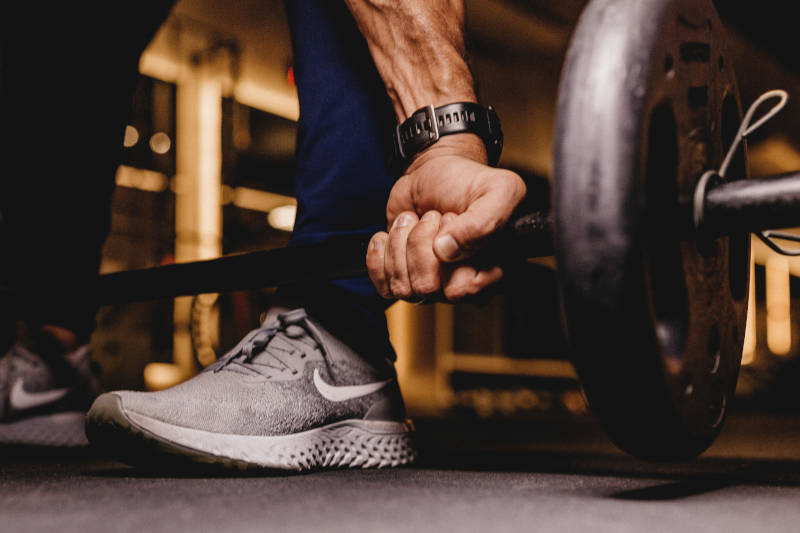Personal fitness is a vital goal in an individual’s trajectory, with the need for a healthy fit lifestyle being paramount. With many people opting to using personal trainers, having an in-home trainer is the sure way to go. However, what does an in-home personal trainer do?
Personal trainers seek to advise individuals on how to attain personal fitness and healthy living. By formulating a detailed fitness plan depending on individual fitness levels, in-home fitness trainers ensure their clients are focused and dedicated to their goals. Many clients opt for personal training in the gym, but in-home training is becoming inherently popular.
The ease of training in your home’s comfort is unmatched and brindled with the right environment to work towards personalized goals without the managerial restrictions that come with gyms. In-home personal trainers offer their clients information and the necessary resources to guide them to a healthy and fit lifestyle. Their flexibility in training schedules and the freedom to work crazy hours are bonuses to both the trainer and the clients. In-home personal trainers are also conversant with emergency first aid and CPR certification to train their clients in safe exercises that minimize injury and accidents.

Getting Started As an In-Home Personal Trainer
An in-home personal trainer requires a plan to be able to achieve their set goals and requirements. To start with, establishing SMART goals is paramount in ensuring the overall success of their services. The goals should be realistic to fit the long term or short term goals set by the trainer. The client expectations and the opportunity to plan time wisely is greatly influenced by the goals set.
An in-home personal trainer’s checklist should consist of the following, at least:
Training plan
A concrete training plan guides the trainer towards achievable goals for their clients and ensures they can make informed decisions towards their client’s well-being. There are several factors to consider when establishing a training plan as an in-home personal trainer, which includes:
- Location of training: Establishing whether the training is done at the client’s home gym or the trainer’s home gym is paramount in determining logistics and planning the fitness regimen. Considering the space of the training location should be considered to ascertain the client’s safety and well-being.
- Transport and logistics: it is logical to consider whether these costs will be factored in the overall package. How far is the trainer willing to go based on the geographical area?
- Service charge: After factoring in the transport and fitness modules program depending on the client, what will the training packages consist of? Trainers can set a standard charge or customize it according to the training modules of each client.
- Desired income per month: This is achieved by establishing the number of sessions one is willing to have in a month. After factoring in expenses, how much income is left monthly to consider this a sustainable venture?
- Certification and Policies

Obtaining popular and accredited certifications is necessary to maximize your chances of getting clients. There are major authorities and governing bodies that require certification of personal trainers regardless of their level of expertise. The trainer’s business should also have training policies that help set rules and structures to conduct operations. For instance, erecting cancellation and refund policies will help clients understand what is required of them. Training policies will also dictate the mode and scope of training, payment, and communication between the trainer and the client. These policies are best highlighted on client contracts, which should be in a legal form.
Supplies and training equipment
It is best for an in-home personal trainer to have their training equipment, regardless of whether the client has their home gym or supplies. This enables a comprehensive approach since most clients rarely have a full set of everything required during training. However, the trainer can also assess the available equipment for usability.
Licenses and registration
Despite the in-home training aspect, it is best, but not a must, to register the personal training business and get the required licenses for operation. Registering as an LLC in your state is fast and achievable after conducting due diligence from the state City Hall for example.
Insurance plan
Insurance protects the trainer, the business, and clients from possible eventualities. Therefore, having a business training liability insurance which factors in injury and property damage is paramount. You can also add car insurance to cover your vehicle if needed.
Marketing plan
A good marketing plan is paramount in the overall success of any business. Branding a website and using social media to reach out to potential clients is a great starting point. Offering promotions and PR packages and advertising material such as flyers, business cards, or networking through event hosting is a great way to sensitize locals on the services offered. After acquiring clients, it is important to build a good relationship with them to get referrals to prospective clients.
Personal attributes and growth
With a solid plan and all the required documentation, a good in-home personal trainer should constantly aim to develop trends in the industry. Continuing education gives room for continued growth necessary for inspiration. Having adequate experience and enthusiasm also goes a long way in inspiring clients and motivating them to do better.

Career Projection of an In-Home Personal Trainer
With the right certifications and training, in-home personal trainers can work almost anywhere in society. For instance, civic and social organizations can be a great start when charting a career path as an in-home personal trainer. Most organizations have fitness centers that may require personal trainers. Therefore, the need for a trainer to offer health information can be useful in this setting.
In-home personal trainers can also work with hospitals and care facilities that have rehabilitated patients needing a fitness regimen to get them back on track. By assessing the patient’s ability depending on their recovery level, the trainers can formulate a personalized plan to help them gain back muscle and functional mobility.
Recreational centers are also full of potential clients in need of personal trainers. By offering comprehensive fitness plans and regimens, clients can enroll and pay up for one on one training at the location of their choice.



















